Sun Care: Exploring the Effects of the Sun on Our Skin
As spring winds down and we are looking forward to the summer months, everyone is very happy to see the sunshine and with it the warmer weather. However, the sun does come with a special set of its own worries, and while the effects of the sun are always present (yes, even in the long winter months), they are certainly more pronounced in the summer months.
In this post we will examine the effects of the sun on our skin, how we can use sunscreen to combat some of those effect, how to choose the right type of sun protection for you and your family, and some general tips for sun safety.
The Dangers of Sun Exposure
Most of us think about the sun, with happy thoughts of summer and the benefits of vitamin D, but in truth too much exposure to the sun ages our skin and increases the risk of developing skin cancer. Many of the changes to the skin that we think are a normal part of aging are caused by too much exposure to the sun, most notably wrinkles and age spots. Over time the UV light damages the fibers in the skin, and as they break down the skin begins to sag, stretch and lose the ability to bounce back after stretching. In addition, our eyes can also feel effects of the sun. Many of these effects are not evident right away, but they do show as we age, and it is always smart to start caring about your skin early.
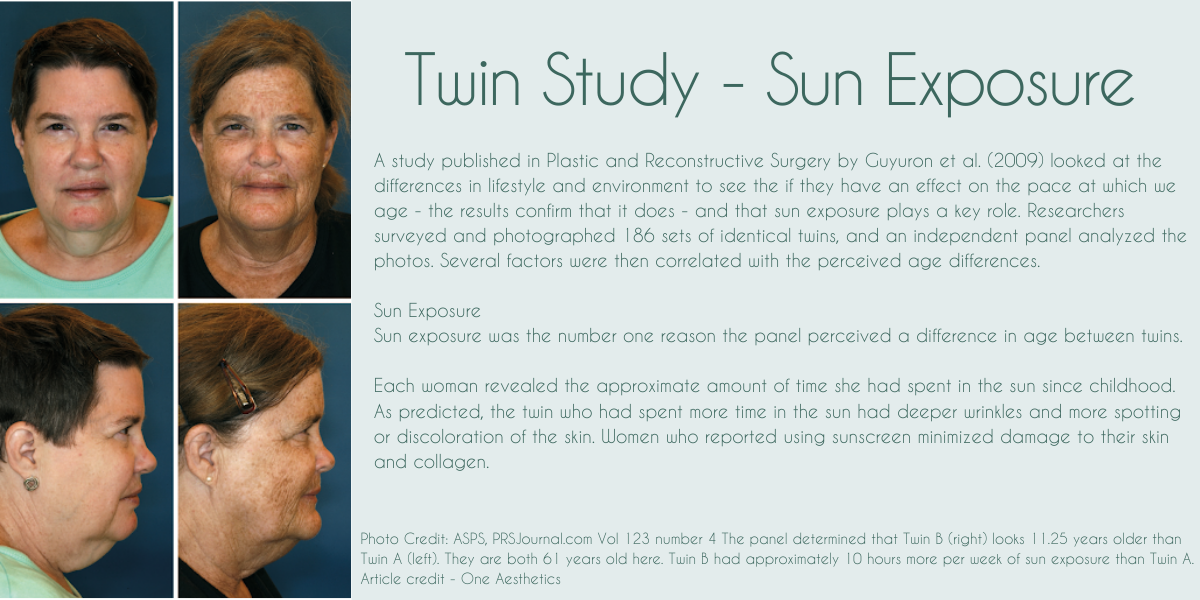
While the above are all cause for concern, it is of course the dangers of the sun when it comes to skin cancer that is most notable. Did you know that skin cancer is the most common cancer in Canada? According to the Canadian Dermatology Association, it is exposure to the sun’s harmful ultraviolet rays that is the greatest environmental risk factor for skin cancer.
Medication and the Sun
Did you know that the use of certain medication can cause phototoxic reactions? Phototoxic reactions are dose-related sunburn-like reactions that can potentially occur in all people with sufficient light exposure and a high enough dose of the drug. It is the radiation in the UVA range that causes most drug-related phototoxic reactions.
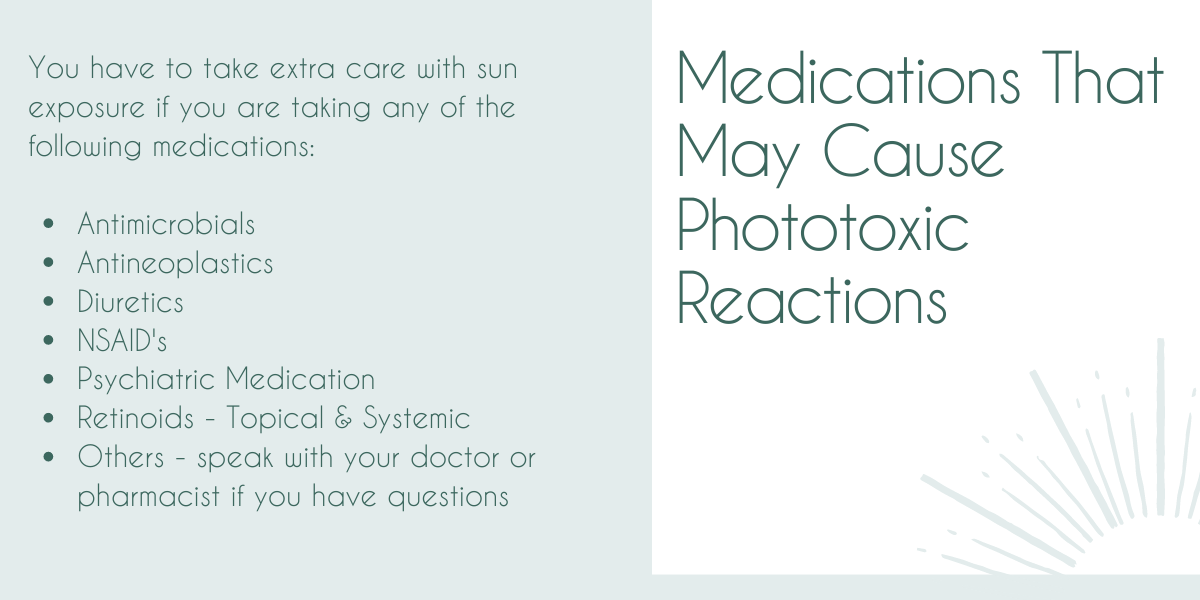
Medications That May Cause Phototoxic Reactions:
- Antimicrobials – such as ceftazidime and tetracycline
- Antineoplastics – such as EGF inhibitors and vinblastine
- Diuretics
- NSAID’s (Nonsteroidal Anti-Inflammatory Drug) – such as ibuprofen and naproxen
- Psychiatric Medications – such as chlordiazepoxide and imipramine
- Retinoids – both topical and systemic
- Others – there are other medications that can cause a phototoxic reaction. Please speak with your primary healthcare professional or pharmacist if you have questions.
All the above is not meant to scare – but to educate, as there are ways to reduce the risks that the sun poses. Be sure to protect yourself when the sun is at its strongest, wear a hat and sunglasses, be sure to cover your skin, and use sunscreen with at least 30 SPF or higher.
Sun Safety Tips
Below are a few sun safety tips that will help you stay protected all year long.
- Try to avoid the sun between 10am and 3pm, when the sun is at its strongest.
- Find shade and cover up. Wide brimmed hats and tighter weaved clothing are good options.
- Do not forget about your eyes – wear UV blocking sunglasses.
- On the beach remember that beach umbrellas do not protect you from the sun rays being reflected off the nearby sand.
- Do not forget about the car. Many car windows filter out UVB, but not UVA rays. Make sure to cover up while driving.
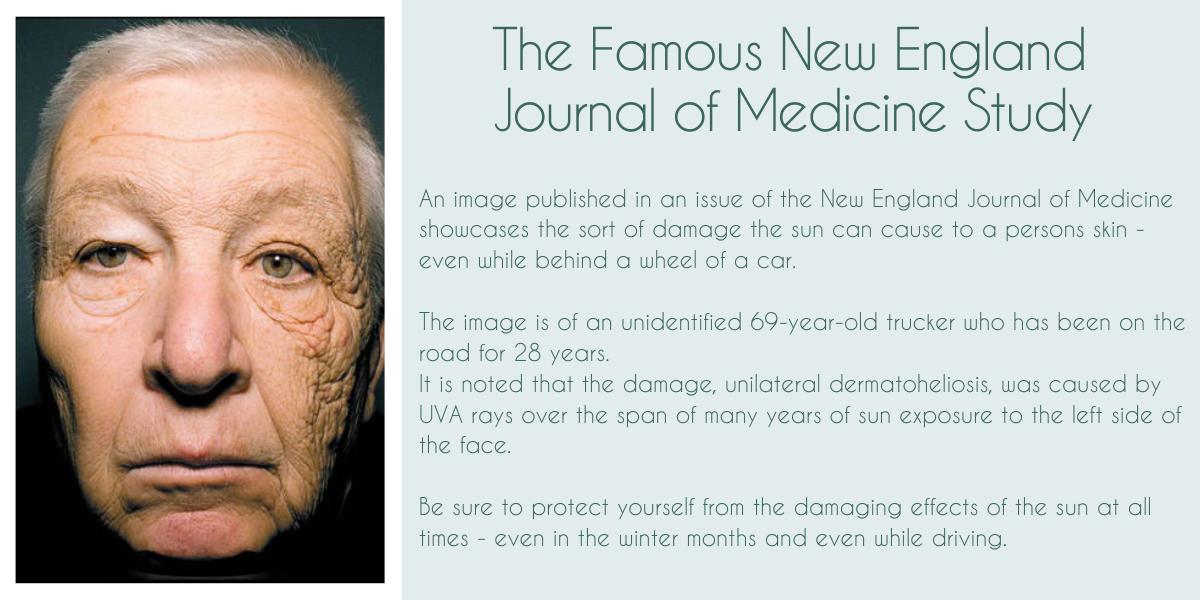
SPF – Sun Protection Factor
You might have noticed that sunscreens have an SPF number on them – but do you know what the number means? The SPF relates to the amount of time it takes for the skin to burn without any protection and how long it would take if appropriate amount of sunscreen is used.
Sunscreens
There is a pretty clear consensus that applying sunscreen is an important step in preventing the damage from the sun; but what are sunscreens exactly and how do you choose the right one for you?
Sunscreens are barriers which are applied to the skin. They work by either absorbing (chemical sunscreens) or reflecting (mineral sunscreens) the sun’s UV rays away from your skin. They come in different forms, such as lotions, sprays or creams, and of course there are many brands available, which provides lots of choices.
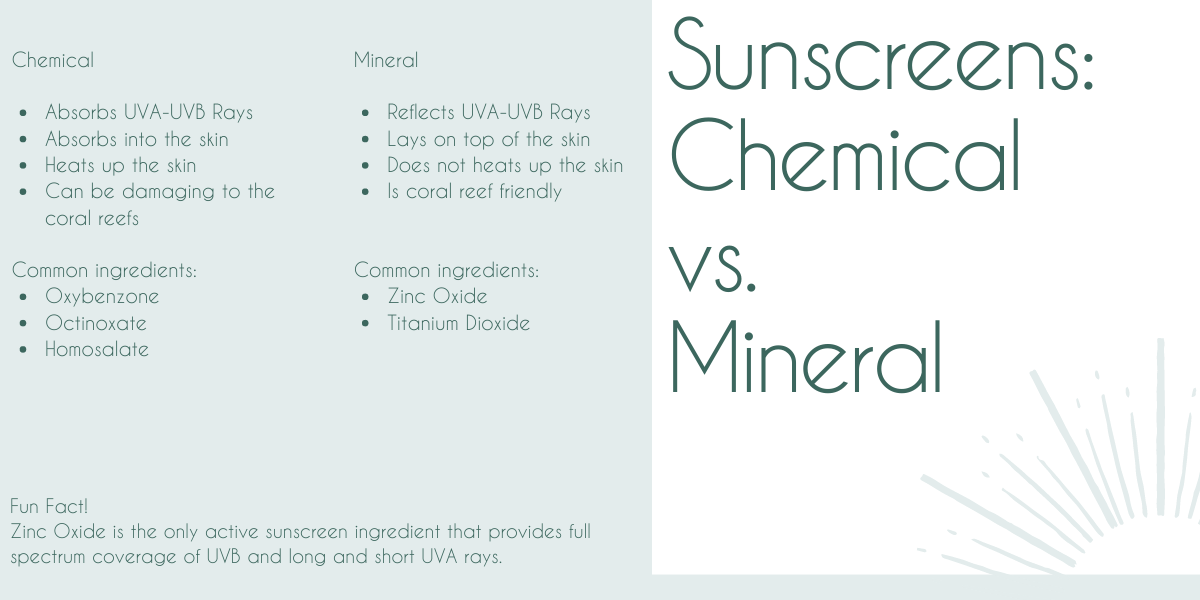
First we must understand what UV rays actually mean, as there are two kinds: UVA and UVB. It is important to note that SPF addresses only the UVB rays, not UVA. That is why it is important to pick a broad spectrum protection sunscreen that also addresses UVA rays.
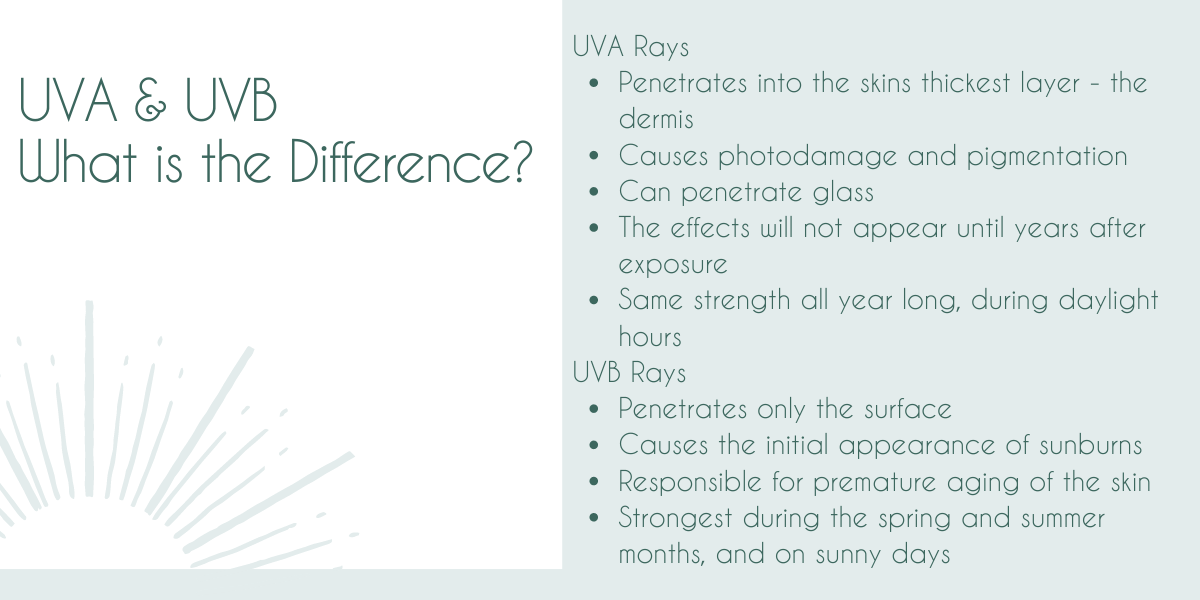
Application is also very important. Sunscreen should be applied liberally and often, especially after swimming or sweating. Try to apply it about 15 minutes before going outside, but if you cannot, apply as soon as you can when outside. A good guide is one palm full for each arm and each leg. When applying to your face, do not spray directly on the face, but rather into your hand. Do not forget about your lips; use SPF 30 or higher lip balm and reapply every hour.
Important note on expiration dates – Due to the nature of the item, we do not recommend using sunscreens past their expiry date. Additionally, if you keep your sunscreens in hot temperatures, it can accelerate the deterioration of the product. Make sure not to store your sunscreen in a hot car and protect it from the heat when taking it on the go with you.
Sources used for the above article and resources for further research:
Canadian Dermatology Association
The New England Journal of Medicine

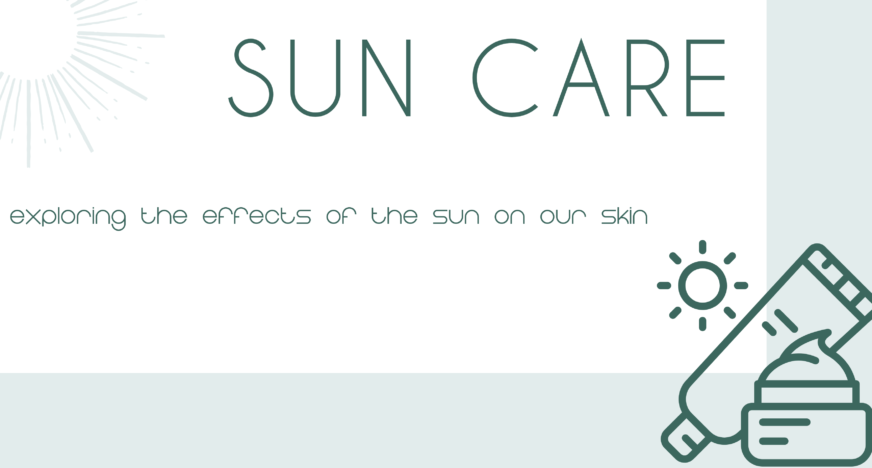
0 Comment